I have this PowerShell script that will collect the system information of my remote servers.
My problem: I am not sure how to have this script when running to populate my newly created database Hal0Test that I created in SQL Server Management Studio.
End Goal: I would like my powershell script to look at the column in the remote server QAUTILITYDB01 > ServerList (database) > labeled "ServerName" take "QACGAPPSVR01, QACGAPPSVR03, and etc." Push each of those values into my powershell script and generate for each server its FQDN and OS. Lastly, push that new values (FQDN and OS) back to the remote database.
NEW Powershell Script Code:
$connectionString = "Server=QAUTILITYDB01;Database=Hal0Test;Integrated Security=True;"
$connection = New-Object System.Data.SqlClient.SqlConnection
$connection.ConnectionString = $connectionString
$connection.Open()
$command = $connection.CreateCommand()
$ServerArray = [System.Collections.ArrayList]@()
$query = "SELECT ServerName FROM ServerList"
$command.CommandText = $query
$ServerNames = $command.ExecuteReader()
While ($ServerNames.read()){
$ServerArray.Add($ServerNames[0])
}
foreach($Server in $ServerArray){
# $Server returns each server name
$os = Get-WmiObject -Class Win32_OperatingSystem -Computer $_
$disks = Get-WmiObject -Class Win32_LogicalDisk -Computer $_ |
Where-Object {$_.DriveType -eq 3} |
ForEach-Object {
'{0} {1:D} MB Free/{2:D} MB Used' -f $_.DeviceID,
[int]($_.FreeSpace/1MB), [int]($_.Size/1MB)
}
New-Object -Type PSCustomObject -Property @{
'FQDN' = $_
'ServerName' = $os.PSComputerName
'OperatingSystem' = $os.Caption
'Disks' = $disks -join ' | '
}
$command.CommandText = "UPDATE ServerList SET FQDN = '$_', OS = '$os.Caption' WHERE ServerName = '$os.PSComputerName';"
$result = $command.ExecuteNonQuery()
} Export-Csv 'C:\Desktop\HalO\output.csv' -Delimiter '|' -NoType
Powershell CSV file:
ServerName FQDN Disks OperatingSystem
SVR01 Svr01.xxx.com C: 17899 MB Free/51097 MB Used | E: 22277 MB Free/25597 MB Used Microsoft Windows Server 2008 R2 Enterprise
SVR03 svr03.xxx.com C: 18280 MB Free/61337 MB Used | E: 50079 MB Free/56317 MB Used Microsoft Windows Server 2008 R2 Enterprise
SVR05 svr05.xxx.com C: 8751 MB Free/40857 MB Used | E: 4987 MB Free/10237 MB Used Microsoft Windows Server 2008 R2 Enterprise
SVR06 svr06.xxx.com C: 14188 MB Free/61337 MB Used | E: 34962 MB Free/56317 MB Used Microsoft Windows Server 2008 R2 Enterprise
SVR08 Svr08.xxx.com C: 6464 MB Free/40857 MB Used | E: 5921 MB Free/10237 MB Used Microsoft Windows Server 2008 R2 Enterprise
Error:
Exception calling "ExecuteNonQuery" with "0" argument(s): "There is already an open DataReader
associated with this Command which must be closed first."
At C:\Users\mdaraghmeh\Desktop\HalO\test2.ps1:33 char:5
+ $result = $command.ExecuteNonQuery()
+ ~~~~~~~~~~~~~~~~~~~~~~~~~~~~~~~~~~~~
+ CategoryInfo : NotSpecified: (:) [], MethodInvocationException
+ FullyQualifiedErrorId : InvalidOperationException
SQL ServerList:
